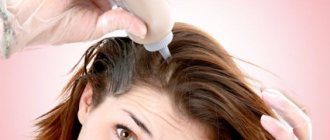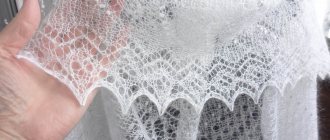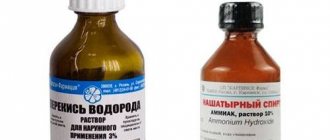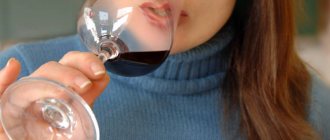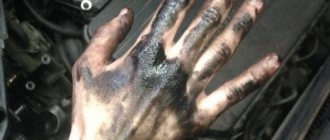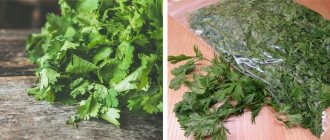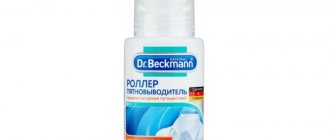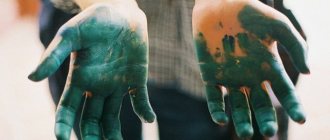Despite the fact that all modern hair dyes, including henna, are sold complete with plastic gloves, you can still get your hands dirty during the dyeing procedure. Or, after washing off the coloring composition, persistent stains remain on the forehead, cheeks, neck, and ears.
By themselves, such traces of paint do not harm the skin; as a rule, the paint comes off on its own after a few days. But they want to wash off the stains as quickly as possible, because you won’t sit at home and wait for them to “deign” to disappear.
In addition, temporary tattoos made using henna have become very popular. They are short-lived and also gradually wear off on their own. After a while, the drawing becomes blurry, indistinct, and you want to delete it as soon as possible.
There are many safe and effective ways to remove henna from your skin. We will consider everything, and everyone will be able to choose the most suitable one for themselves.
Henna drawing
This tattoo technique is called mehendi. The designs are made with special hypoallergenic henna; they can be a classic red color or have a wide color palette. Images are applied to any part of the body at the request of the client. Such tattoos are especially in demand in the summer. Their advantages are that they are done painlessly and for a short period of time. There is always the opportunity to delete the drawing completely or make another one.
The holding time of mehendi on the skin is approximately 2 weeks, but depending on the area of application, these periods may vary. Images are erased faster if they are located on the folds, on the wrists, where they often come into contact with water. Also, their rapid erasure occurs from intensive rubbing with a washcloth.
The problem is that the pattern wears off gradually and unevenly; after 10 days of application, unclear and unaesthetic outlines remain on the skin. I would like to remove them.
How to do it?
Ways to remove henna from skin
Henna is a natural dye of bright red color, which is obtained from the leaves of lawsonia. It has a rich shade and amazing durability. Removing stubborn henna stains from the skin is difficult, but possible.
Hot water
Henna cannot tolerate high temperatures. The area of skin with an unpleasant spot should be thoroughly steamed and immediately wiped with a pumice stone, but do not press too hard, otherwise abrasions may occur. And there is no need to reheat the skin; it is better to wait a while.
Sea salt
Sea salt is suitable for removing stubborn stains. This product has both physical and chemical effects. Salt is usually sold in the form of large crystals, so before use they need to be crushed using a coffee grinder, but there is no need to turn the product into powder, otherwise it will be of no use.
Apply a pinch of salt to the stain, slightly moisturizing the skin, and rub gently. You can add a small amount of water as needed. Continue the procedure until the salt is completely dissolved. If the stain has not completely disappeared, you should wait a little and repeat the action.
Sea salt can be used in the form of baths: in hot water, but so as not to get burned, dissolve the salt and put your hands in the water, hold for about 20 minutes, then wipe the steamed skin with spots with a pumice stone.
Cosmetic scrub
A regular cosmetic scrub works in the same way.
You should take a product with small particles of an abrasive substance and apply it in the same way as described in the previous version. Use the scrub no more than every 3 hours until the stains completely disappear.
Vegetable oil
Every housewife has vegetable oil in her kitchen.
Surprisingly, this product can also treat henna stains. The oil must be heated, not slightly, but not too hot, so as not to get burned. Apply the heated product liberally to the paint stains. Leave for 30 minutes and wash off with soap.
Lotion
To remove stains or henna patterns, any alcohol-based cosmetic lotion is suitable.
Apply a little of this product to a cotton pad and wipe the skin, but without much pressure. The lotion can be used to cleanse the skin of the hands and face.
Vodka
If you don’t have lotion at home, you can replace it with regular vodka, nail polish remover, hydrogen peroxide or 10% ammonia solution.
But such products are not suitable for cleansing the face of henna. And it’s better not to use them if there are wounds or pimples on the skin - it will burn badly.
Soda with lemon
Baking soda mixed with lemon juice is useful for combating henna stains. Both products are aggressive, and lemon should not be used separately, but when combined, the effect of the ingredients is extinguished, and the mixture does not provoke negative consequences. But it is better to use the substance in small portions.
When they are mixed, the mass begins to bubble, it is at this moment, while the reaction is taking place, that you need to use the product.
Instead of lemon juice, you can use citric acid. After mixing it with soda, you need to add a few drops of water (not hot!).
Butter and cognac
Mix olive oil and cognac in equal quantities, depending on the amount of dirt or the size of the pattern. The mixture is applied to the skin for an hour, then washed off with soap.
According to reviews, laundry soap has the best effect.
Tooth powder
The means for this method are not often found at the moment; moreover, it is practically forgotten, and not deservedly so. This is tooth powder. And experienced, thrifty housewives will confirm that this product is an excellent cleaner and not only for teeth.
In the old days, they used it to polish polished surfaces and jewelry. The fact is that the powder has an abrasive effect designed to carefully remove stubborn dirt.
Wet a toothbrush in water and dip the bristles into the powder, using gentle circular movements to wipe the stains on the moistened skin.
Cigarette ash
The most original method, which at first glance seems funny, is what hairdressers resort to. Yes, even professional craftsmen have troubles in the form of hands stained with paint after a coloring procedure.
The method is as follows: moisten a cotton pad with water, squeeze it lightly and apply cigarette ash to it. Rub the stains until they disappear completely.
By special means
There are various special products for removing henna and mehendi stains from the skin. You can purchase them in professional hairdressing stores, tattoo parlors or hairdressers. These funds have both pros and cons. The positive properties include the fact that they have an immediate effect, and they can remove not only stains, but also dye from regrown hair.
Disadvantages: the products have a strong, specific smell (so you need to wear a mask when using them), and they are quite expensive.
Detailed instructions for use are always included with the product.
Features of the dye
Henna has been used to color and strengthen hair for a very long time. Powder from the plant is used:
- for hair coloring;
- eyebrows;
- when painting the body.
Many people prefer to use henna for hair, as this dye contains natural ingredients. It may also contain other additives that give different shades to the paint.
We recommend: How to remove pen paste from wallpaper?
The most durable henna is considered to be a natural red hue. This color will stay on your hair for a long time and will not wash off. There are several types of henna sold in stores. To get the maximum effect, you should choose a more expensive product, for example, Indian henna. This dye perfectly covers gray hair, while adding shine to the hair, making it more manageable and elastic.
If dark spots come into contact with the skin during hair coloring, it is difficult to get rid of dark spots. Before you start working with henna, you should put on disposable gloves, open the bag of powder and dilute it with warm water in the indicated proportions. The consistency of the dye should resemble sour cream. If you make the powder too thin, it may run when applying the dye to your hair, which will lead to contamination of the skin.
When dyeing your hair, you should take care of special clothing in advance. When applying the mass to the strands, it may come into contact not only with the body, but also with clothing.
After washing off the dye, the hair should be washed well and dried with a towel. To do this, it is better to select it in advance, given that after use it will remain stubborn stains from henna.
Although dyeing with henna has certain disadvantages, for example, staining the skin or clothes, the benefits of dyeing after its use are undeniable.
This powder is ideal for owners of oily hair, while slightly drying it, giving the curls shine and volume. In addition, the strands begin to get dirty less.
Coloring will also benefit those with thin strands, filling the scales and making the hair thicker, while nourishing the strands and strengthening the roots.
In addition, henna is used not only for hair coloring, but also for body painting. When applying mehendi, you can admire the beautiful design for 2-3 weeks. Unfortunately, over time, the paint wears off or is washed off by external influences, and the design becomes less attractive. If there is no possibility or desire to correct the pattern, you can try to wash off the remnants of the pattern from the skin.
The benefits of using natural dye for skin and hair are great, so it is important to know how to quickly remove stains after applying the mixture. Henna stains are very difficult to remove. In order to completely erase them, different methods are used. If you do not wash off the paint from the skin, it will remain on it for several more days, which is quite inconvenient.
Precautions and useful tips
First of all, it should be noted which products should absolutely not be used to remove henna from the skin:
- Petrol
- Acetone
- Windscreen wipers
- Washing powder
- Cleaning products for household surfaces
The above products can remove paint, but they are dangerous for the skin.
- Vinegar and lemon, each on their own, are excellent whitening agents . But in this situation with henna they should not be used, they have the completely opposite effect. Lemon juice and 9% table vinegar are recommended to be used to fix the pattern on the skin. It is acceptable to use these products as part of complex mixtures, in particular for extinguishing soda.
- Not all of the above options are acceptable for removing stains from the skin of the face, to avoid getting them into the eyes. To do this, it is better to use an oil composition or lotion.
- In order to protect yourself from the appearance of red spots on the skin from henna, before dyeing you need to lubricate the skin around the perimeter of hair growth with cream , not forgetting to smear your ears, they most often get dirty with paint.
- Not any cream will do : you don’t need to take a quickly absorbing product, the paint will be absorbed along with it. It is better to take a cream that is rich and thick, and apply it sparingly; the thicker the layer, the more reliably it will protect. When you wash your hair after coloring, the cream will also be washed off.
- If the desired result is not achieved, there is no need to use all available methods within an hour . Before using a new method, you should wait, ideally, at least a day.
- After each regular procedure for washing off henna patterns and stains, it is recommended to lubricate the skin with a nourishing cream , since many of the proposed products dry out the dermis. Instead of cream, vegetable or cosmetic oil is also suitable.
Let the simple and well-known truth “it is easier to prevent a problem than to find ways to solve it” serve as a guide to action. Next time, before painting, you should take all measures to prevent stains from appearing, and you won’t have to remove anything.
Liked? Share with your friends!
How to prevent staining
When using henna, you should remember that it is better to prevent skin staining than to deal with the consequences. By following simple rules, you can prevent the appearance of red spots.
Basic steps to help avoid staining:
- the dyeing procedure should be carried out with gloves, which will help prevent pigmentation of the hands;
- you can apply a wide strip of rich cream along the hairline, which will prevent the pigment from penetrating into the deep layers of the epidermis;
- melt the beeswax to a liquid consistency and treat the areas adjacent to the hair (as the wax hardens, a protective film is formed).
Advice! If you use henna, always have a damp sponge or pad on hand. This will allow you to wipe away any drops that get on your skin at any time.
